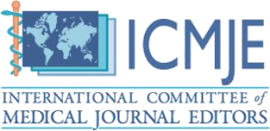Physiotherapist’s Perspective to Importance of Pathophysiology of Supraspinatus Tendonitis in Proper Rehabilitation of Pain and Dysfunction
DOI:
https://doi.org/10.51611/iars.irj.v13i01.2023.232Keywords:
Supraspinatus Tendonitis, Impingement, Pain, Inflammation, Physiotherapy, Tendon InjuriesAbstract
This article focuses on the physiotherapist perspective on the importance of pathophysiology of the Supraspinatus. Tendonitis is a very frequent cause of shoulder pain. The tendinopathy of supraspinatus most frequently affects people involved in various sports driven actions and above the head work in our daily living. It is thought to be caused by both intrinsic and extrinsic factors, but for simplification they were divided into Anatomical, Biomechanical, Vascularity, Activity related, Biochemical and Age-related factors. The following data-bases were searched for both published and unpublished studies in English language for the period of 1962 to 2022: PubMed, EMBRACE, MedLine, Web of Science, Scopus. The following terms were used to carry out the search: Shoulder, impingement, supraspinatus, pain, pathophysiology, physiotherapy implication, athletes, older adults. We conclude that it is important to have in-depth knowledge about these concepts of pathophysiology of pain in terms of all possible etiologies and the healing process which helps the physiotherapist to make wise decisions about the rehabilitation process.
Downloads
References
Spargoli G. Supraspinatus tendon pathomechanics: a current concepts review. International journal of sports physical therapy. 2018 Dec;13(6):1083. DOI: https://doi.org/10.26603/ijspt20181083
Urwin M, Symmons D, Allison T, Brammah T, Busby H, Roxby M, Simmons A, Williams G. Estimating the burden of musculoskeletal disorders in the community: the comparative prevalence of symptoms at different anatomical sites, and the relation to social deprivation. Annals of the rheumatic diseases. 1998 Nov 1;57(11):649-55. DOI: https://doi.org/10.1136/ard.57.11.649
Arrigoni P, Brady PC, Burkhart SS. Calcific tendonitis of the subscapularis tendon causing subcoracoid stenosis and coracoid impingement. Arthroscopy: The Journal of Arthroscopic & Related Surgery. 2006 Oct 1;22(10):1139-e1. DOI: https://doi.org/10.1016/j.arthro.2005.06.028
Ling SC, Chen CF, Wan RX. A study on the vascular supply of the supraspinatus tendon. Surgical and Radiologic Anatomy. 1990 Sep 1;12(3):161-5. DOI: https://doi.org/10.1007/BF01624517
McMahon PJ, Debski RE, Thompson WO, Warner JJ, Fu FH, Woo SL. Shoulder muscle forces and tendon excursions during glenohumeral abduction in the scapular plane. Journal of shoulder and elbow surgery. 1995 May 1;4(3):199-208. DOI: https://doi.org/10.1016/S1058-2746(05)80052-7
Shin KM. Partial-thickness rotator cuff tears. The Korean journal of pain. 2011 Jun;24(2):69. DOI: https://doi.org/10.3344/kjp.2011.24.2.69
Khan K, Cook J. The painful nonruptured tendon: clinical aspects. Clinics in sports medicine. 2003 Oct 1;22(4):711-25. DOI: https://doi.org/10.1016/S0278-5919(03)00035-8
Riley G. The pathogenesis of tendinopathy. A molecular perspective. Rheumatology. 2004 Feb 1;43(2):131-42. DOI: https://doi.org/10.1093/rheumatology/keg448
Thomopoulos S, Genin GM, Galatz LM. The development and morphogenesis of the tendon-to-bone insertion What development can teach us about healing. Journal of musculoskeletal & neuronal interactions. 2010 Mar;10(1):35.
Ward AD, Hamarneh G, Ashry R, Schweitzer ME. 3D shape analysis of the supraspinatus muscle: a clinical study of the relationship between shape and pathology. Academic radiology. 2007 Oct 1;14(10):1229-41. DOI: https://doi.org/10.1016/j.acra.2007.06.014
Vahlensieck M, An Haack K, Schmidt HM. Two portions of the supraspinatus muscle: a new finding about the muscles macroscopy by dissection and magnetic resonance imaging. Surgical and Radiologic Anatomy. 1994 Mar;16(1):101-4. DOI: https://doi.org/10.1007/BF01627931
Kim SY, Boynton EL, Ravichandiran K, Fung LY, Bleakney R, Agur AM. Three‐dimensional study of the musculotendinous architecture of supraspinatus and its functional correlations. Clinical Anatomy: The Official Journal of the American Association of Clinical Anatomists and the British Association of Clinical Anatomists. 2007 Aug;20(6):648-55. DOI: https://doi.org/10.1002/ca.20469
Huang CY, Wang VM, Pawluk RJ, Bucchieri JS, Levine WN, Bigliani LU, Mow VC, Flatow EL. Inhomogeneous mechanical behavior of the human supraspinatus tendon under uniaxial loading. Journal of orthopaedic research. 2005 Jul;23(4):924-30. DOI: https://doi.org/10.1016/j.orthres.2004.02.016
Fırat T, Türker T. Is the long sarcomere length responsible for non-traumatic supraspinatus tendinopathy? Potential novel pathophysiology and implications for physiotherapy. Pathophysiology. 2012 Jun 1;19(3):179-83. DOI: https://doi.org/10.1016/j.pathophys.2012.04.008
Ban AA, Makada MT, Bahri NU. Correlation of supraspinatus tears and tendinosis with acromion morphology and acromioclavicular arthritis based on conventional MRI and CT. J Med Sci Clin Res. 2019;7(06):106-15. DOI: DOI: https://doi.org/10.18535/jmscr/v7i6.21
Balke M, Schmidt C, Dedy N, Banerjee M, Bouillon B, Liem D. Correlation of acromial morphology with impingement syndrome and rotator cuff tears. Acta orthopaedica. 2013 Jan 1;84(2):178-83. DOI: https://doi.org/10.3109/17453674.2013.773413
Balke M, Liem D, Greshake O, Hoeher J, Bouillon B, Banerjee M. Differences in acromial morphology of shoulders in patients with degenerative and traumatic supraspinatus tendon tears. Knee surgery, Sports Traumatology, Arthroscopy. 2016 Jul;24(7):2200-5. DOI: https://doi.org/10.1007/s00167-014-3499-y
Nakajima T, Hughes RE, An KN. Effects of glenohumeral rotations and translations on supraspinatus tendon morphology. Clinical biomechanics. 2004 Jul 1;19(6):579-85. DOI: https://doi.org/10.1016/j.clinbiomech.2004.02.007
Kim SY, Ko JB, Dickerson CR, Collins DF. Electromyographic investigation of anterior and posterior regions of supraspinatus: a novel approach based on anatomical insights. International Biomechanics. 2017 Nov 3;4(2):60-7. DOI: https://doi.org/10.1080/23335432.2017.1364667
Spracklin A. The Mechanical Environment of the Supraspinatus During Arm Elevation: A Three- Dimensional Finite Element Analysis.
Moor BK, Bouaicha S, Rothenfluh DA, Sukthankar A, Gerber C. Is there an association between the individual anatomy of the scapula and the development of rotator cuff tears or osteoarthritis of the glenohumeral joint? A radiological study of the critical shoulder angle. The bone & joint journal. 2013 Jul;95(7):935-41. DOI: https://doi.org/10.1302/0301-620X.95B7.31028
Gerber C, Snedeker JG, Baumgartner D, Viehöfer AF. Supraspinatus tendon load during abduction is dependent on the size of the critical shoulder angle: a biomechanical analysis. Journal of Orthopaedic Research. 2014 Jul;32(7):952-7. DOI: https://doi.org/10.1002/jor.22621
McCreesh KM, Purtill H, Donnelly AE, Lewis JS. Increased supraspinatus tendon thickness following fatigue loading in rotator cuff tendinopathy: potential implications for exercise therapy. BMJ open sport & exercise medicine. 2017 Dec 1;3(1). DOI: https://doi.org/10.1136/bmjsem-2017-000279
Chopp JN, O'Neill JM, Hurley K, Dickerson CR. Superior humeral head migration occurs after a protocol designed to fatigue the rotator cuff: a radiographic analysis. Journal of shoulder and elbow surgery. 2010 Dec 1;19(8):1137-44. DOI: https://doi.org/10.1016/j.jse.2010.03.017
Sano H, Ishii H, Yeadon A, Backman DS, Brunet JA, Uhthoff HK. Degeneration at the insertion weakens the tensile strength of the supraspinatus tendon: A comparative mechanical and histologic study of the bone‐tendon complex. Journal of orthopaedic research. 1997 Sep;15(5):719-26. DOI: https://doi.org/10.1002/jor.1100150514
Biberthaler P, Wiedemann E, Nerlich A, Kettler M, Mussack T, Deckelmann S, Mutschler W. Microcirculation associated with degenerative rotator cuff lesions: in vivo assessment with orthogonal polarization spectral imaging during arthroscopy of the shoulder. JBJS. 2003 Mar 1;85(3):475-80. DOI: https://doi.org/10.2106/00004623-200303000-00012
Herberts P, Kadefors R, Högfors C, Sigholm G. Shoulder pain and heavy manual labor. Clinical orthopaedics and related research. 1984 Dec 1(191):166-78. DOI: https://doi.org/10.1097/00003086-198412000-00022
Engelhardt C, Farron A, Becce F, Place N, Pioletti DP, Terrier A. Effects of glenoid inclination and acromion index on humeral head translation and glenoid articular cartilage strain. Journal of shoulder and elbow surgery. 2017 Jan 1;26(1):157-64. DOI: https://doi.org/10.1016/j.jse.2016.05.031
Bonde JP, Mikkelsen S, Andersen JH, Fallentin N, Bælum J, Svendsen SW, Thomsen JF, Frost P, Thomsen G, Overgaard E, Kaergaard A. Prognosis of shoulder tendonitis in repetitive work: a follow up study in a cohort of Danish industrial and service workers. Occupational and Environmental Medicine. 2003 Sep 1;60(9):e8 DOI: https://doi.org/10.1136/oem.60.9.e8
Werner CM, Ossendorf C, Meyer DC, Blumenthal S, Gerber C. Subacromial pressures vary with simulated sleep positions. Journal of shoulder and elbow surgery. 2010 Oct 1;19(7):989-93. DOI: https://doi.org/10.1016/j.jse.2010.04.039
Millar NL, Wei AQ, Molloy TJ, Bonar F, Murrell GA. Cytokines and apoptosis in supraspinatus tendinopathy. The Journal of bone and joint surgery. British volume. 2009 Mar;91(3):417-24. DOI: https://doi.org/10.1302/0301-620X.91B3.21652
Gotoh M, Hamada K, Yamakawa H, Tomonaga A, Inoue A, Fukuda H. Significance of granulation tissue in torn supraspinatus insertions: An immunohistochemical study with antibodies against interleukin‐1β, cathepsin D, and matrix metalloprotease‐1. Journal of orthopaedic research. 1997 Jan;15(1):33-9. DOI: https://doi.org/10.1002/jor.1100150106
Nakama LH, King KB, Abrahamsson S, Rempel DM. VEGF, VEGFR‐1, and CTGF cell densities In tendon are increased with cyclical loading: An in vivo tendinopathy model. Journal of orthopaedic research. 2006 Mar;24(3):393-400. DOI: https://doi.org/10.1002/jor.20053
Attia M, Scott A, Duchesnay A, Carpentier G, Soslowsky LJ, Huynh MB, Van Kuppevelt TH, GossardC, Courty J, Tassoni MC, Martelly I. Alterations of overused supraspinatus tendon: a possible role of glycosaminoglycans and HARP/pleiotrophin in early tendon pathology. Journal of Orthopaedic Research. 2012 Jan;30(1):61-71. DOI: https://doi.org/10.1002/jor.21479
Molloy TJ, Kemp MW, Wang Y, Murrell GA. Microarray analysis of the tendinopathic rat supraspinatus tendon: glutamate signaling and its potential role in tendon degeneration. Journal of Applied Physiology. 2006 Dec;101(6):1702-9. DOI: https://doi.org/10.1152/japplphysiol.00386.2006
Lui PP, Chan KM. Tendon-derived stem cells (TDSCs): from basic science to potential roles in tendon pathology and tissue engineering applications. Stem Cell Reviews and Reports. 2011 Nov 1;7(4):883-97. DOI: https://doi.org/10.1007/s12015-011-9276-0
Harbin M. Deposition of calcium salts in the tendon of the supraspinatus muscle. Archives of Surgery. 1929 Apr 1;18(4):1491-512. DOI: https://doi.org/10.1001/archsurg.1929.01140130585037
Carlisi E, Lisi C, Dall'Angelo A, Monteleone S, Nola V, Tinelli C, Dalla Toffola E. Focused extracorporeal shock wave therapy combined with supervised eccentric training for supraspinatus calcific tendinopathy. European journal of physical and rehabilitation medicine. 2018 Feb 1;54(1):41-7. DOI: https://doi.org/10.23736/S1973-9087.16.04299-4
Franklin SL, Dean BJ, Wheway K, Watkins B, Javaid MK, Carr AJ. Up-regulation of glutamate in painful human supraspinatus tendon tears. The American journal of sports medicine. 2014 Aug;42(8):1955-62. DOI: https://doi.org/10.1177/0363546514532754
Cheung S, Dillon E, Tham SC, Feeley BT, Link TM, Steinbach L, Ma CB. The presence of fatty infiltration in the infraspinatus: its relation with the condition of the supraspinatus tendon. Arthroscopy: The Journal of Arthroscopic & Related Surgery. 2011 Apr 1;27(4):463-70. DOI: https://doi.org/10.1016/j.arthro.2010.09.014
Kavuru, N. S. and Krishnan, S. . (2022) “Unusual Presentation of Musculoskeleton Pain”, IARS’ International Research Journal. Victoria, Australia, 12(01), pp. 1–3. doi: 10.51611/iars.irj.v12i01.2022.177. DOI: https://doi.org/10.51611/iars.irj.v12i01.2022.177
Downloads
Published
Issue
Section
License
Copyright (c) 2023 Karishma Chawla, Zainy Khan, Nitin Dhar

This work is licensed under a Creative Commons Attribution 4.0 International License.
Author(s) hold complete right on the content of this article. Copyright to the content are governed as per Copyright Policy of the Journal.




















